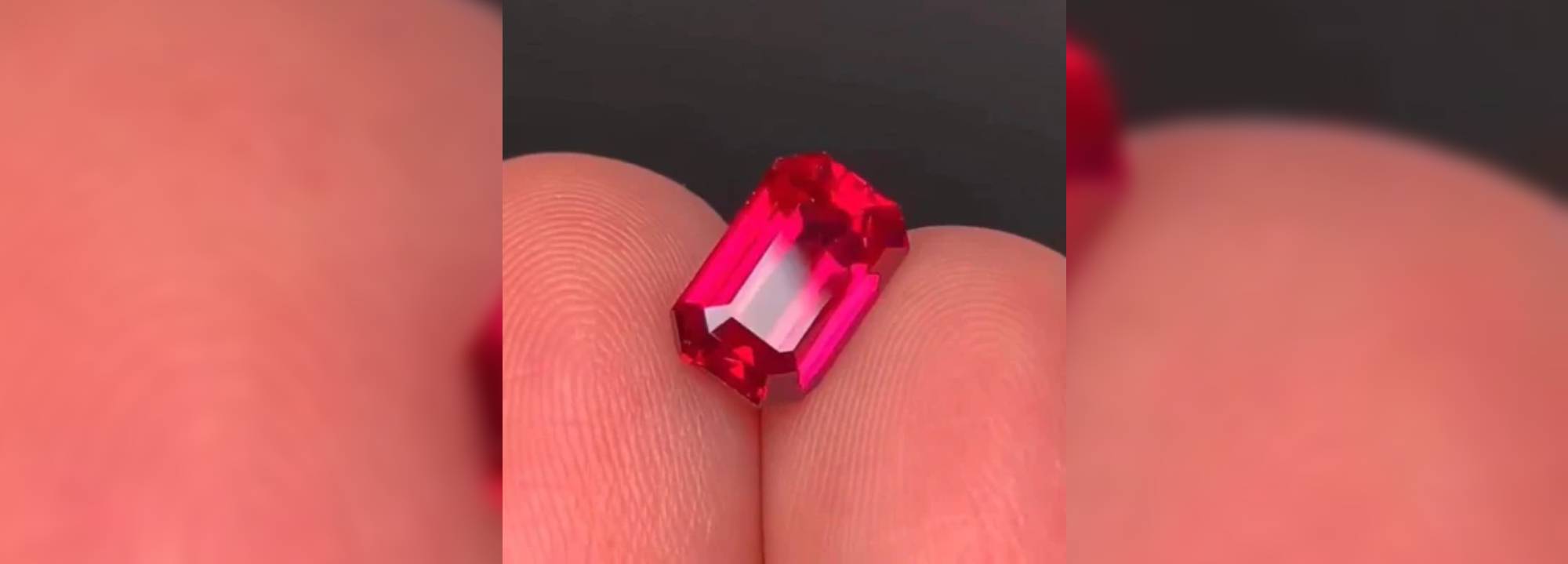
Demystifying Blood Pigeon Rubies: A Comprehensive Guide
Understanding how to buy ruby is essential for making a wise investment. This guide will help you identify the best rubies.
In the realm of precious gemstones, few captivate the imagination and spark curiosity quite like the enigmatic Blood Pigeon Rubies. Revered for their mesmerising deep red hue and unparalleled rarity, these gems have an allure that transcends time and borders. Read on here to demystify the secrets behind Blood Pigeon Rubies and unravel the rich tapestry of their history, properties, and cultural significance. Understanding how to buy ruby is essential for making a wise investment. This guide will help you identify the best rubies.
Origins and Naming
The term “Blood Pigeon Ruby” may evoke images of avian associations or mysterious origins, but the reality is rooted in the gem’s distinctive colour and its place of discovery. These rubies are predominantly mined in the Mogok region of Myanmar, formerly known as Burma, a land renowned for producing some of the world’s most exquisite gemstones.
The intriguing name “Blood Pigeon” is derived from the gem’s deep red colour, reminiscent of the rich, dark plumage of a pigeon. However, it’s crucial to note that the name is more a poetic moniker than a scientific classification. Gemologists generally categorise these rubies based on their colour, clarity, and cut rather than relying on fanciful names.
Colour and Characteristics
The hallmark of a genuine Blood Pigeon Ruby lies in its intense, vivid red hue. This deep coloration is often described as a “pigeon’s blood” red, a term used across the gemstone industry to denote the most prized and valuable shade of red in rubies.
The colour spectrum of Blood Pigeon Rubies ranges from a pure, vibrant red to slightly purplish or bluish tones. The gem’s saturation and tone are critical factors in determining its quality and value. A rich, uniform colour saturation with minimal secondary hues is highly sought after, distinguishing these rubies as exceptional specimens in the gemstone market.
Crystal Structure and Formation
Blood Pigeon Rubies, like other rubies, are a variety of the mineral corundum. The deep red colour is attributed to the presence of chromium in the crystal structure. Interestingly, the formation of these rubies involves a complex interplay of geological processes that unfold over millions of years.
Typically, rubies form in marble or metamorphic rocks under high-pressure conditions. The presence of specific trace elements, such as chromium, along with the right combination of heat and pressure, leads to the creation of these breathtaking gems. The slow and intricate dance of nature results in the development of crystals that captivate with their brilliant red hues.
Cultural Significance
Throughout history, rubies have held a special place in various cultures, symbolising passion, courage, and vitality. The allure of the Blood Pigeon Ruby, with its exceptional colour and rarity, only enhances the cultural significance of this gem.
In Burmese culture, where a significant percentage of these rubies are mined, they are considered symbols of protection and good fortune. Many believe that wearing a Blood Pigeon Ruby can bring prosperity and ward off evil. The gems are also associated with love and passion, making them popular choices for engagement rings and other romantic jewellery pieces.
Market Value and Rarity
The exceptional rarity of Blood Pigeon Rubies contributes significantly to their market value. The combination of a limited geographic source and the stringent criteria for their colour quality places these gems in a league of their own within the gemstone market.
Gem dealers and collectors alike are willing to pay a premium for a top-quality Blood Pigeon Ruby. The rarity of these gems, coupled with their mesmerising beauty, makes them highly coveted by those seeking a truly exceptional and unique addition to their gemstone collection.
Enhancements and Treatments
In the world of gemstones, it’s common for stones to undergo treatments to enhance their colour and clarity. Blood Pigeon Rubies, while stunning in their natural state, may sometimes undergo heat treatment to improve their colour. This industry-accepted practice involves carefully applying heat to the gem to remove undesirable hues and enhance the overall vibrancy of the red colour.
It’s crucial for buyers to be aware of any treatments a gemstone may have undergone, as this information can impact its value. Reputable jewellers and dealers disclose such treatments, ensuring transparency and allowing buyers to make informed decisions.
Caring for Blood Pigeon Rubies
To preserve the beauty and integrity of Blood Pigeon Rubies, proper care is essential. Like all gemstones, they should be protected from scratches and harsh chemicals. Cleaning with a soft, damp cloth is usually sufficient, but it’s advisable to consult with a jeweller for specific care instructions based on the setting and any potential treatments the gem may have undergone.
In the fascinating world of gemstones, Blood Pigeon Rubies stand out as treasures of exceptional beauty and rarity. From their origins in the mystic landscapes of Myanmar to their cultural significance and market value, these gems weave a narrative that captivates gem enthusiasts and collectors alike. As we demystify the secrets behind the Blood Pigeon Ruby, we uncover not just a precious stone, but a symbol of passion, prosperity, and timeless elegance.
For more detailed information on ruby quality, visit GRS GemResearch Swisslab AG – The Leader in Colored Gemstone Reports



